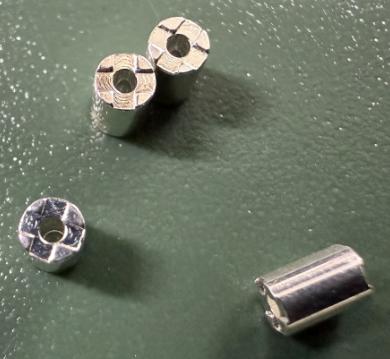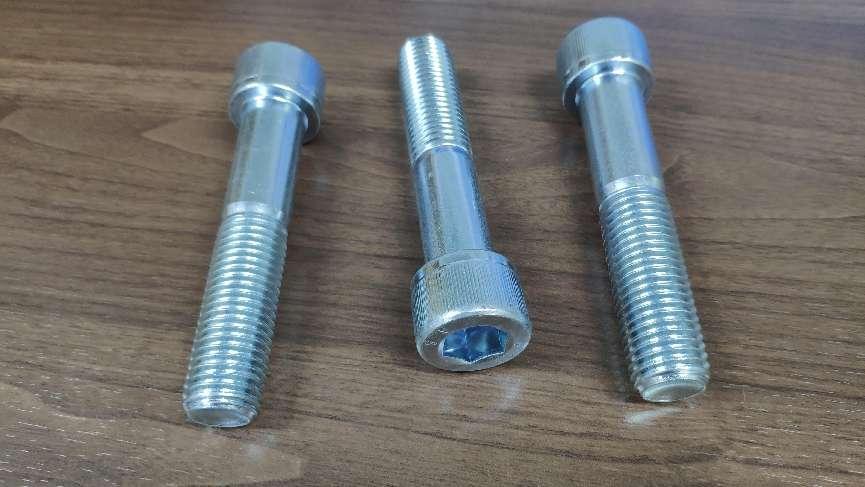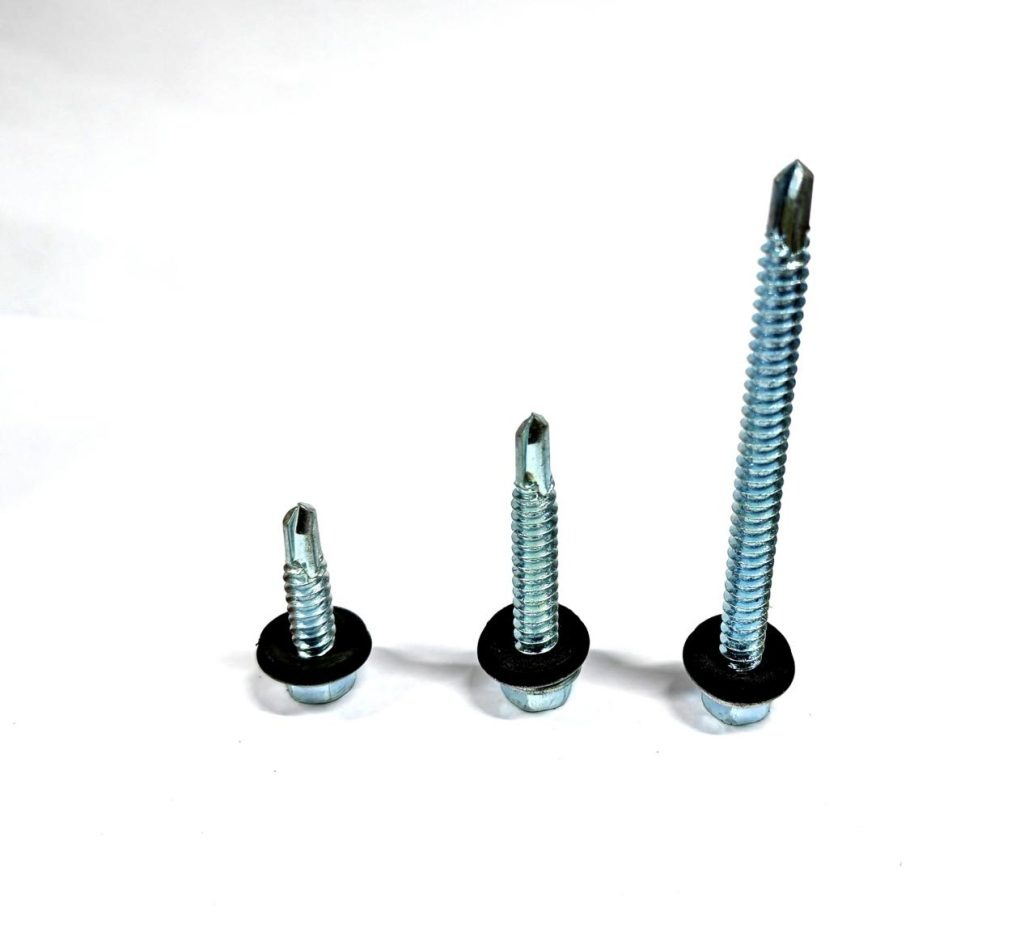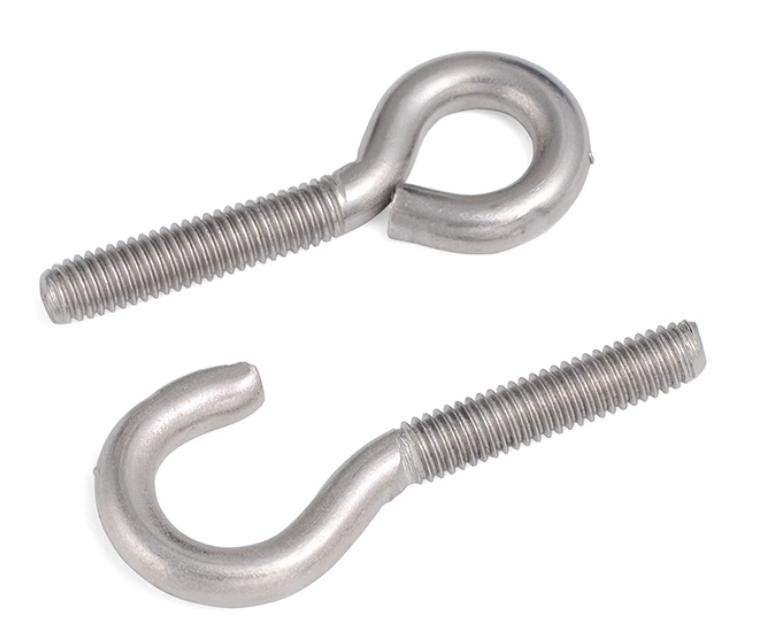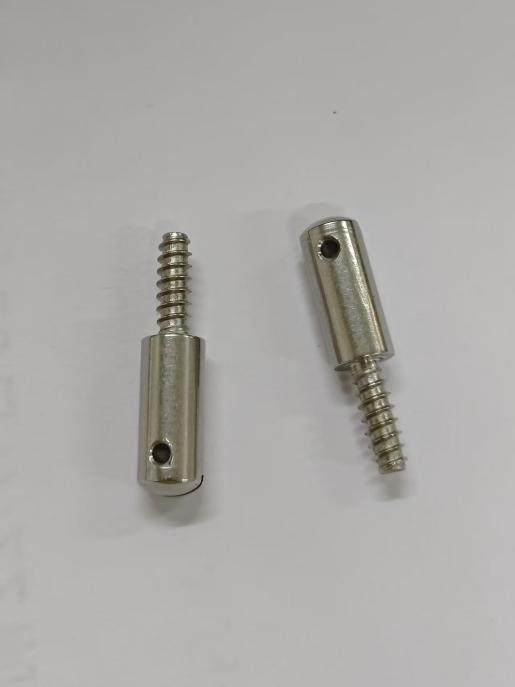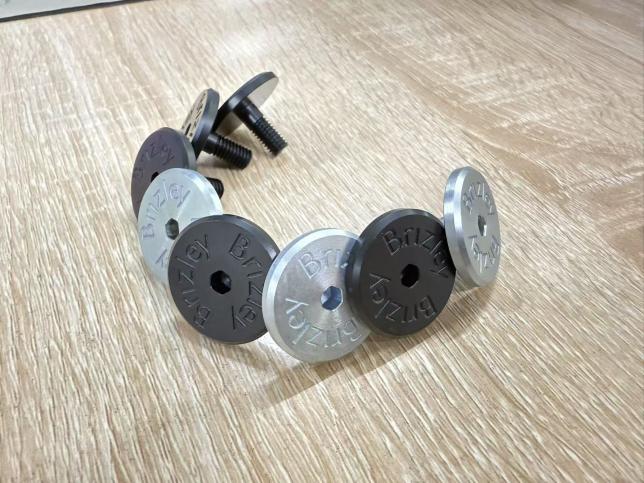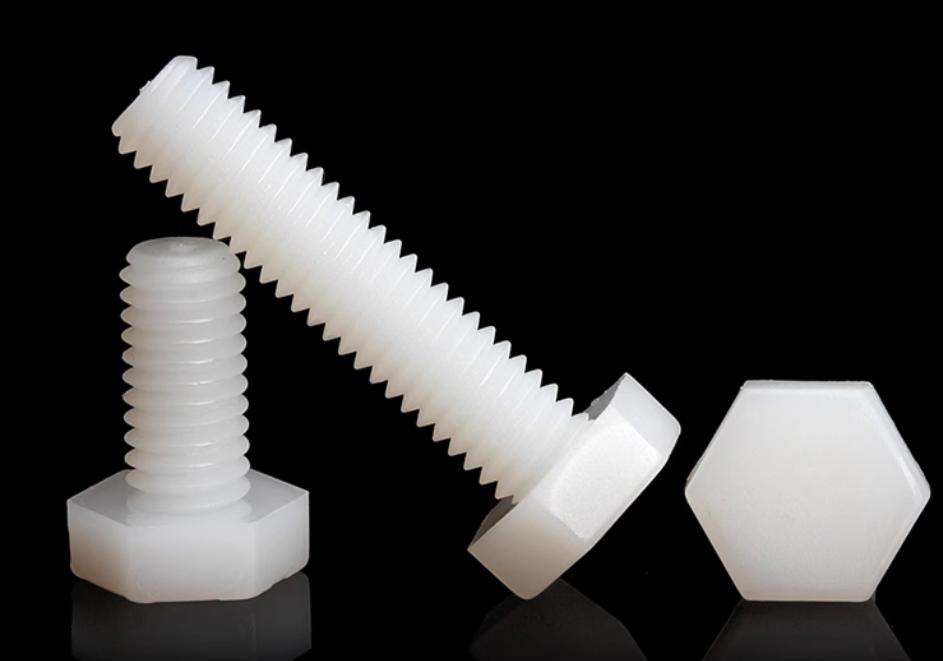The Use of Self-drilling and Self-tapping Screws for Faster Assembly
In manufacturing, building, and DIY projects, efficiency and accuracy are a must. Stretch screws typically require pilot holes to be drilled before tapping thread, hence adding extra phases to the process of assembly. Self-drilling and self-tapping screws are now sine qua nons of fasteners that speed up assembly processes, reduce labor time and enhance structural strength. Their unique design can eliminate numerous steps traditionally part of fastening processes, and hence such screws are now critical in a very wide variety of industries.
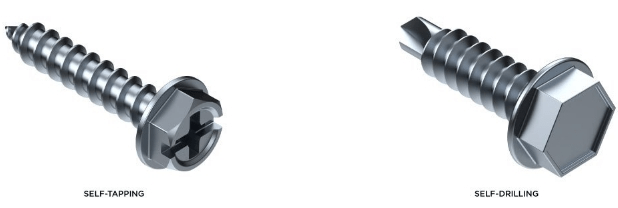
Table of Contents
What are Self-Drilling and Self-Tapping Screws
Self-drilling Screws
Self-drilling screws come with a point which resembles a drill. The integrated point lets the screw cut its own hole while it is driven into different materials like wood, metal or even plastic. This removes the requirement for an additional pilot hole which significantly reduces the time needed to install.
They are typically employed in situations where speed and efficiency are crucial like steel roofing, steel framing and HVAC installation. The design of self-drilling screws guarantees that each screw makes a clear hole and creates strong threads in a single step, which combines drilling and fastening with ease.
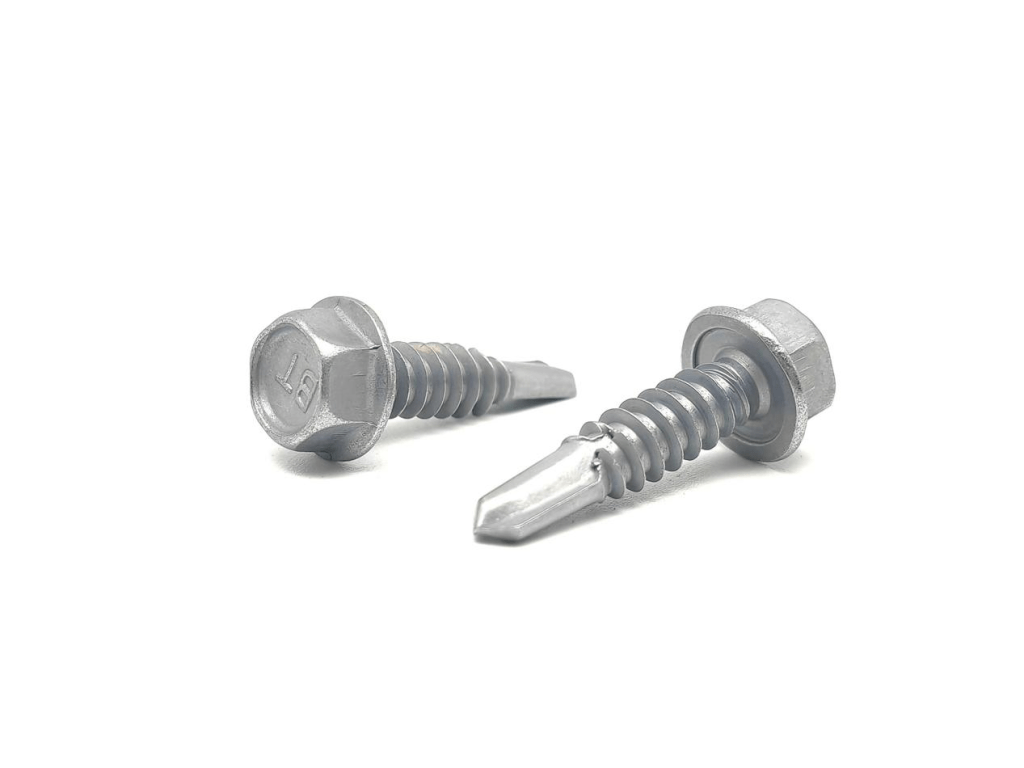
Hexagon Head Self-drilling Screws
Self-tapping Screws
Self-tapping screws are different from self-drilling screws, need the drilling of a hole prior to their installation. They are however made to form their own threads in the material after being inserted. This ability to form threads is what is the reason they are called. Screws are perfect to be used in soft materials like aluminum, plastic or wood. They are typically found in electronics cabinetry, as well as other precision assembly.
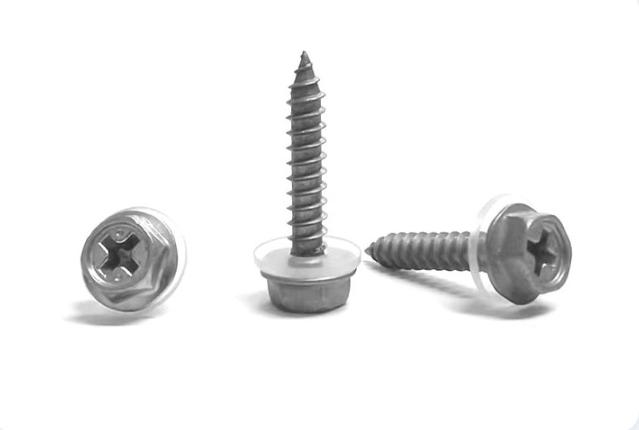
Key Differences Between Self-Drilling and Self-Tapping Screws
This chart gives a side-by-side comparison that will help users choose the right screw based on the needs of their projects.
| Feature | Self-drilling Screws | Self-tapping Screws |
| Tip Design | It has a tip that resembles a drill | It has a pointed or sharp edge. |
| Pilot Hole Requirement | Not necessary | It is required prior to insertion |
| Functionality | Drills its own hole, and taps threads at the same time | Makes threads inside the pre-drilled hole |
| Common Applications | Metal roofing, steel framing, HVAC systems | Wood, plastic components frames made of aluminum |
| Material Suitability | Materials that are harder like steel or the thicker metal | Materials that are soft, such as plastic, wood or thin metal |
| Installation Speed | Speedier due to a single-step installation in a single step. | A little slower due to the the need to drill a hole prior to drilling |
| Tool Requirements | Standard power driver is the only one | Drill for hole + driver for screw |
| Best Used When | Speed and efficiency are essential. | Material control and thread precision are vital. |
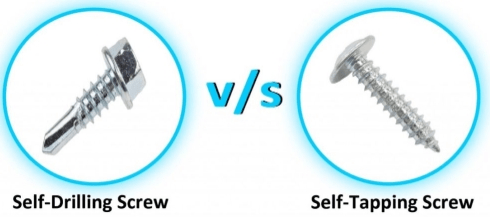
Key Benefits of Self-drilling and Self-tapping Screws for Faster Assembly
Self-drilling and Self-tapping Screws are specifically designed screws that offer a variety of benefits that directly aid in faster, more efficient assembly.
1. Streamlined Installation Process
One of the major advantages of self-drilling and self tapping screws is their capacity to make assembly easier. Self-drilling screws do away with the requirement to drill a pilot hole prior to installation since their built-in drill bit tips cut right through material. Self-tapping screws, although they usually require a pre-drilled hole make their own threads on their insertion. In both instances it reduces the number of steps in fastening. This leads into faster assembly.
2. Reduced Labor Time and Costs
Since these screws do away with the requirement to use separate tapping and drilling tools, they help save substantial work time. Workers are able to complete their work quicker, which decreases the overall cost of labor, particularly for large-scale production or construction projects. A faster screw installation can also decrease fatigue, allowing for a higher level of the efficiency of workers over extended shifts.
3. Fewer Tools Required
Traditional methods of fastening may require multiple tools, including drills or taps as well as screwdrivers. Self-drilling screws need only an ordinary driver, while self-tapping screws typically require one drill for holes for the pilot. This makes work easier as well as reduces damage, and also allows to have an easier and more flexible workforce, especially for remote or fieldwork.
4. Secure and Reliable Connections
Both types of screws are made to provide durable and strong connections. Self-drilling screws work well to join metal parts without stripping. Self-tapping screws form tight threaded connections even in soft substances like wood or plastic. The ability of these screws to create threads in the process increases hold strength and reduces the possibility of loosening with time as a result of the movement or vibration.
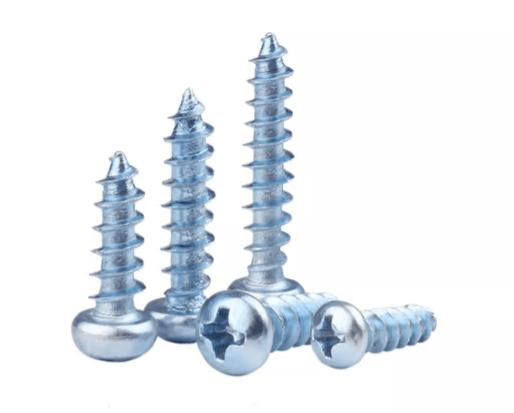
5. Versatility Across Materials and Industries
They’re extremely adaptable and are suitable for use in many different types of materials as well as industries. Self-drilling screws are commonly used in steel roofing, metal framing and HVAC system installations. Self-tapping screws are commonly used in furniture, electronics, along with plastic assembly. They are able to be adapted for speedier deployment across various tasks, without the need to switch to various locking systems.
6. Lower Risk of Material Damage
Self-drilling screws eliminate the necessity for recurrent engagement of the tool, which reduces the chance of causing damage to the workpiece due to improper alignment or force. Additionally, self-tapping screws particularly thread-forming ones designed to reduce cracking in wood or plastic which results in a more polished surface and reducing the chance of waste material.
7. Enhanced Productivity on Repetitive Tasks
When it comes to environments that require a lot of or repetitive fastening, such as assembly lines, or large-scale construction sites, every second that screws are saved translates into substantial efficiency improvements. Screws that are fast and provide constant results, allowing technicians to keep a constant pace, with fewer interruptions or mistakes.
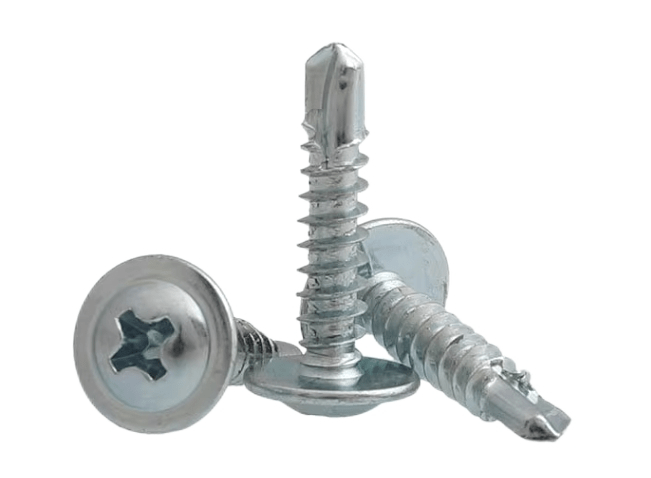
Types and Applications of Self-drilling and Self-tapping Screws
This chart outlines the different types of self-drilling and self-tapping screws with their common applications, helping users to select the appropriate screw based upon the material used and the use case.
| Screw Type | Sub-Type | Description | Common Applications |
| Self-drilling Screws | Tek Screws | Use a drill-bit tip which can be used to cut wood or metal | Metal roofing, steel framing, HVAC duct installation |
| Hex Washer Head Screws | Made to work with washers to improve sealing and the ability to hold | Metal-to-metal connections and roofing panels | |
| Winged Self-drilling Screws | Side wings are used to expand the hole in soft materials prior to reaching metal | The attachment of wood or plastic to metal | |
| Self-tapping Screws | Thread-Forming Screws | The material is displaced to form threads that are used with softer materials. | Plastics Metals in thin sheets, soft woods |
| Thread-Cutting Screws | Cut-off flutes are used to remove the material and to create threads | Aluminum, hard plastics sheets of thin metal | |
| Pan Head Self-tapping Screws | With a variety of head types for raised or flush finishes | Furniture assembly, electronics, cabinetry | |
| Self-Piercing Screws | Sharp point that cuts through thin plastic or metal without drilling prior to the drill | Light metalwork, automotive panels appliance assembly |
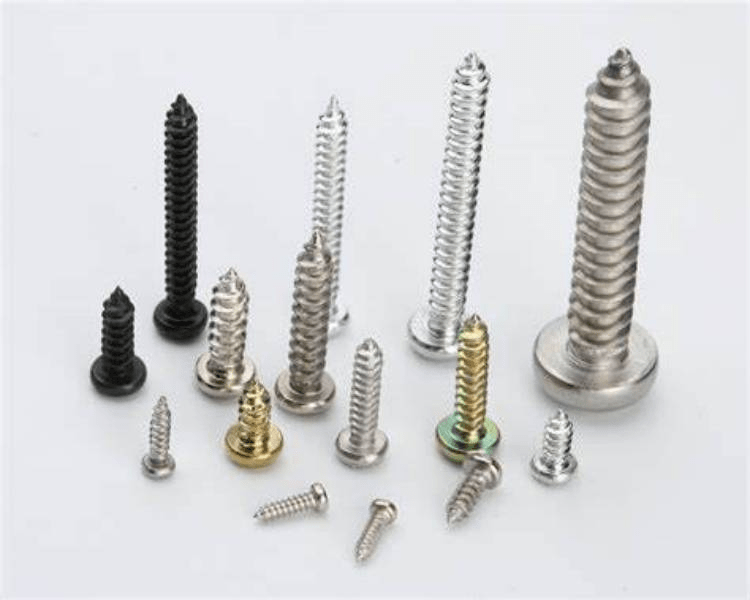
Key Factors to Consider for Choosing the Right Screws Between Self-drilling and Self-tapping Screws
In modern assembly environments in which speed, accuracy and long-term durability are crucial the choice between self-drilling screws and self-tapping screws will directly impact the outcome of a project. While both types of screws are designed to simplify the fastening process, they work differently and are suited to specific tasks.
Material Compatibility Shapes Your Decision
One of the main aspects to take into consideration when choosing between self drilling and self-tapping screws, is the type and the hardness of the material concerned. Self-drilling screws have been specifically designed to cut through harder substances like steel and heavy hardwoods. The drill-bit tips integrated into them allow them to drill into these substrates without the need for an opening pilot hole.
Self-tapping screws are more suited for soft materials such as plastic and softwoods as well as aluminum. They require a hole that has been pre-drilled, but they are able to cut or create their own threads once they are driven into which makes them suitable for materials that are delicate and where excessive penetration can cause damage.
Installation Speed and Workflow Efficiency
Speed is an important factor when choosing a fastening method for large-scale production or time-sensitive installations. Self-drilling screws have immediate benefits since they do not necessity for drilling before. One-step drilling and fastening process will significantly cut down on the time required for assembly and also labor.
But, if the material requires greater care in handling, self-tapping screws – despite needing an opening for pilot holes–will still accelerate the process when over traditional methods of threading. Their capability to create threads without taps separately results in less tool replacements and a smoother assembly process, particularly when working in controlled or precise conditions.
The Role of Holding Strength and Thread Engagement
Beyond speed and the quality of the joint is a significant element. Self-drilling screws offer outstanding holding power for applications which require heavy metal-to-metal bonding where a clean entry and solid thread engagement are essential.
Additionally, self-tapping screws are great for securing materials where thread accuracy is crucial greater than the strength of brute force. Their capacity to form threads with a tight fit within the soft or thin material ensures the resistance to vibrations and loosening. This is vital for products such as electronics or light-weight assemblies.
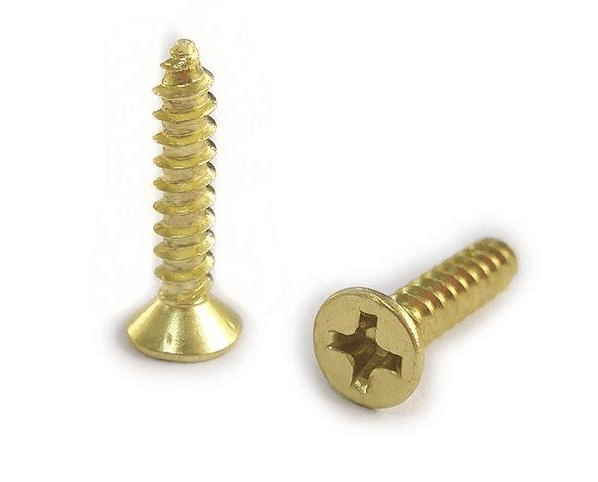
Equipment Availability and Jobsite Conditions
Practical considerations such as access and work conditions affect the selection of a screws. Self-drilling screws have a significant benefit in the field or with constrained areas because they require just the driver. No tap or drill is required. This makes them especially useful in installations with a difficult access or overhead. Self-tapping screws might require a bit more work, however in controlled areas such as workshops or assembly lines the additional process of drilling the pilot hole may increase the precision and cause less installation mistakes.
Application Purpose and Final Use
The final consideration is the purpose of the assembly should inform the selection. If the joint is structural or load-bearing, such as in roofing, steel framing, or heavy equipment–self-drilling screws typically provide a better combination of strength and installation speed. In assemblies where the appearance, precision or protection of the material is essential, like cabinets electronics, cabinetry or manufacturing with light weight self-tapping screws typically provide more control and precision.

Useful Tips for Optimal Use of Self-drilling and Self-tapping Screws for Faster Assembly
This chart highlights key best practices to improve the performance and speed of fastening with self-drilling and self-tapping screws.
| Tip | Description |
| Select Appropriate Screw Size and Type | The screw’s size and type should be matched to the thickness and hardness of the material to ensure a secure fastening. |
| Prepare Proper Pilot Holes | To install self-tapping screws, make pilot holes that are precisely sized to decrease torque and stop cracking. |
| Use Correct Tools and Torque Settings | Use power drives with adjustable torque and correctly fitting bits to prevent stripping or loosening. |
| Keep Screws and Workpieces Clean | Clean up dirt, rust and grease, to guarantee a smooth inserting and sturdy joints. |
| Control Drilling Speed and Pressure | Make sure to use moderately speed and constant pressure to prevent heat damage to screws and other materials. |
| Allow for Expansion and Vibration | Be careful not to over tighten the screws using washers or locking mechanisms to ensure joint stability under strain. |
| Practice Safety and Ergonomics | Utilize ergonomic tools, wear PPE, and keep a good posture to ensure safety and consistency of outcomes. |
| Perform Regular Inspection and Maintenance | Regularly check and maintain screw joints to ensure that they are not corrosion or loosening as time passes. |
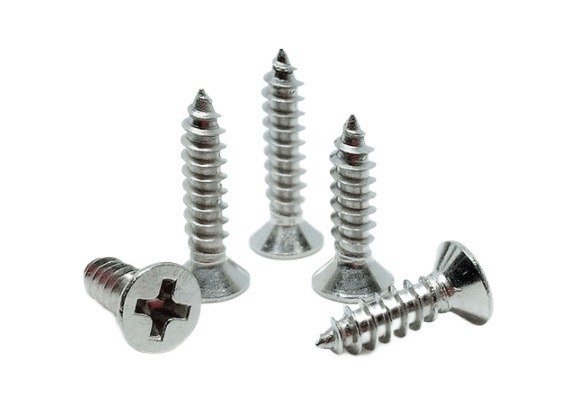
Summary
Self-drilling and self-tapping screws represents significant advancements in the field of fastening technology. Through combining functionality, speed, and reliability, they improve efficiency and speed up assembly processes across a range of industries. As demand for efficient construction and manufacturing continues to increase, the specialized screws will become more and more critical in modern construction.


